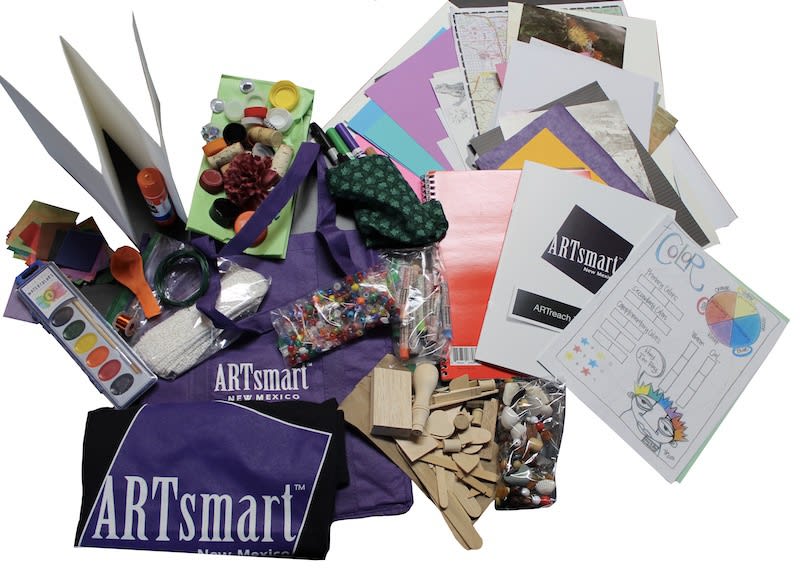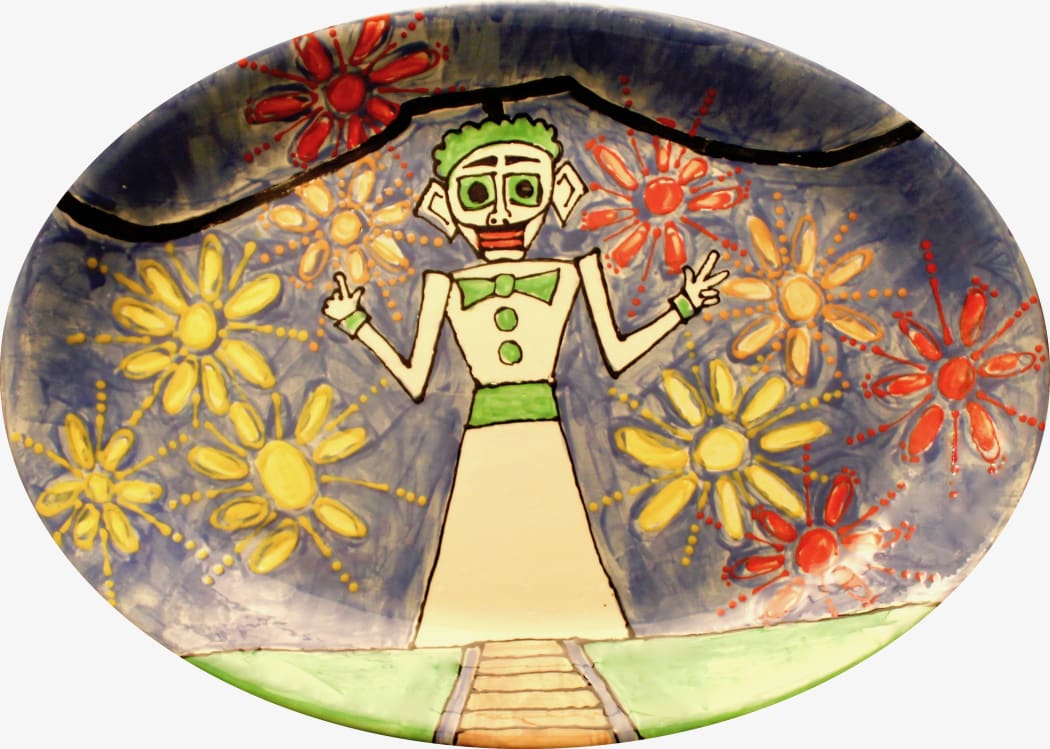
Founded in 1993, ARTsmart provides visual arts opportunities and education to more than 7,750 youth annually in Northern New Mexico. In addition to offering year-round visual arts learning by accredited instructors to northern New Mexico public schools and charter schools such as New Mexico School for the Arts, the nonprofit raises funds for life-changing scholarships for graduating high school seniors to pursue a degree in visual arts.
Read on for our interview with ARTsmart Executive Director Sarah Mandala and Santa Fe Public Schools Arts Education Coordinator Cristina González, and consider supporting the organization by acquiring student artwork from the program or a grab bag of quirky art supplies. All proceeds go to ARTsmart's programs and the participating students.
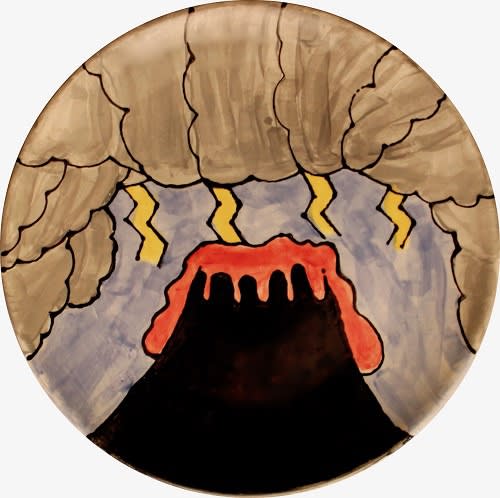
Platter by Evangeline Montano-Rodriguez, ceramic.
What is ARTsmart’s mission, and how has it evolved over the years?
Sarah Mandala: ARTsmart was founded on this idea of bolstering art in the schools and supporting young artists. ARTsmart’s mission is to serve our communities by providing art educational opportunities for all youth. We started with classroom supplies, and then as all schools in Santa Fe got art teachers, we began serving the need of connecting artists in the community to schools. We’ve been fulfilling our mission for over 20 years through many programs and partnerships in Santa Fe and Rio Arriba County. ARTsmart also awards annual scholarships to exceptional Santa Fe students planning to study art in college.
Cristina González: We have an incredible, longstanding partnership. ARTsmart has had a tremendous impact on generations of Santa Fe Public Schools students.
Cristina, could you describe your role in Santa Fe Public Schools (SFPS) and your work with ARTsmart?
CG: I’m the Arts Education Coordinator for the district. I oversee curricular changes and art supply budgets. I assist principals with the hiring of art teachers. Sometimes I assist with facilities requests, for example, when a teacher needs a new kiln. I work with about forty teachers district-wide. Some have been teaching art for decades, others are brand new. I also oversee Professional Development for the Art Department, and a number of community programs. One of the programs that I oversee is the ARTsmart Teaching Artist Program.

Platter by Zahra Naderi, ceramic.
Sarah, you went from teaching art to being the Executive Director of ARTsmart, which elevates so many art teachers and students. What inspired you to make that leap?
SM: It was about expanding my area of influence. I started my career as an art educator in community arts in Albuquerque. Then I went into the schools for years and taught art and English. I was interested in how to create more enriching opportunities for students as a community partner. I believe that when there’s some variety in the school day, a child’s perception of learning changes. When community groups contribute to that school schedule with arts programming, it changes a student’s perception of learning because it’s something different. That’s why I was always happier as the field trip lady than the teacher.
Tell us about some of ARTsmart’s key initiatives, and how the larger Santa Fe creative community interfaces with them.
SM: For years and years, we’ve had a lot of strong connections with and support from Canyon Road galleries and we are known for our annual fundraising events, the Edible Art Tour and the Annual Auction and Dinner. I’m motivated to work with more galleries in town to diversify the connections we build with artists. For our Honorary Artist Residency, we work with an artist who does a residency at Capital High School or Santa Fe High. Students work with the artist, and create artwork that’s inspired by the artist’s work and their process.
We auction those artworks off and give the funds back to the students, and also give some of the funds back to the school’s art program. The program builds a bridge to students who might not have a connection to the art community in Santa Fe.
CG: I am most involved with ARTSmart’s Teaching Artist Program. Annually, we receive a significant donation from ARTsmart which is redistributed to schools based on enrollment. This program gives art teachers the opportunity to hire a visiting artist and purchase supplies for that artist’s project.
Many of our visiting artists participate in this program because they remember the role of their own art teachers, and they want to give back to young people in our community. ARTsmart funds the entire program. Without ARTsmart, we would have very few visiting artists in classrooms.
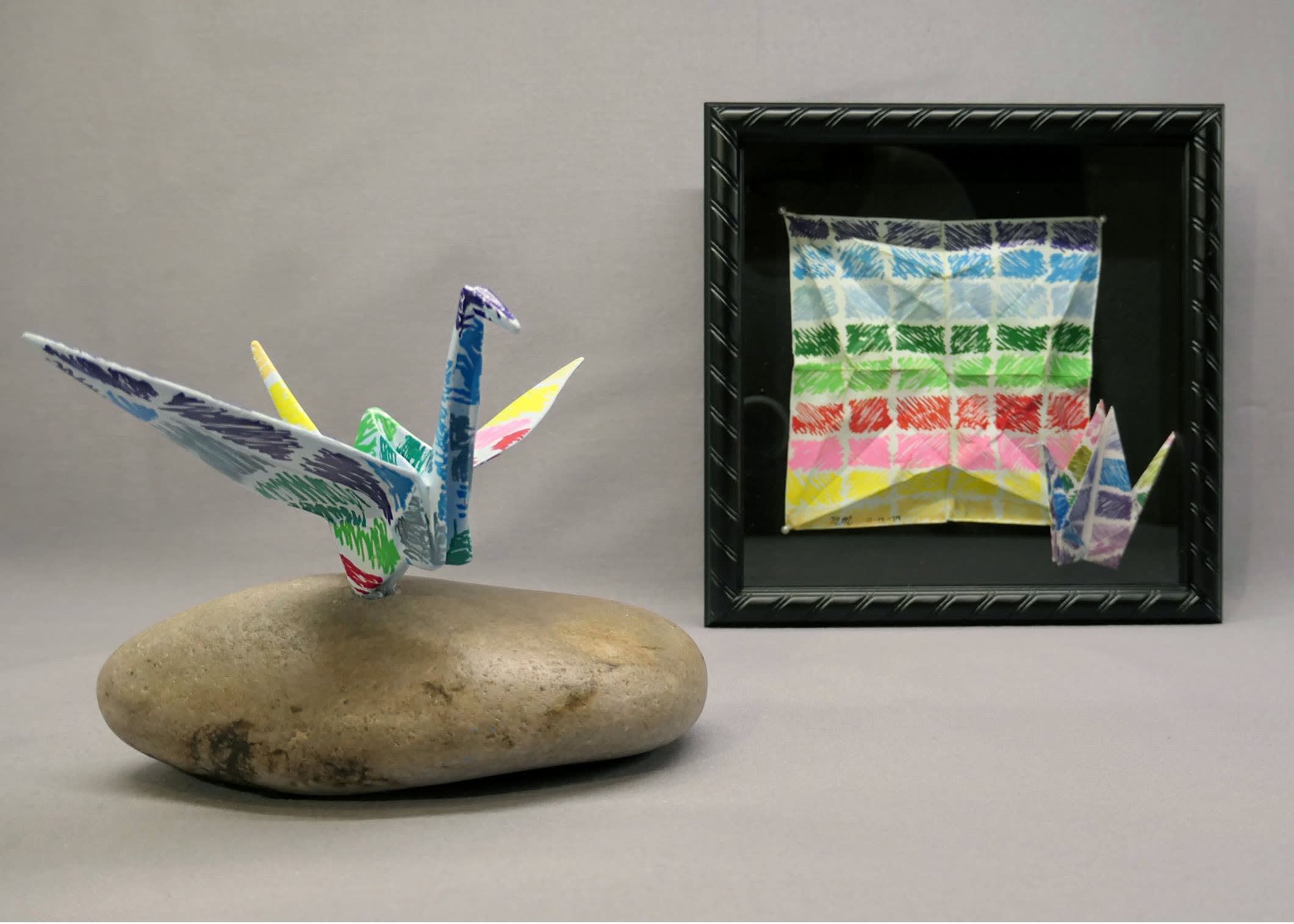
Colorful Thoughts by Marissa Martinez, Capital High School.
In light of the pandemic, how are Santa Fe Public schools and ARTsmart approaching the new academic year?
CG: The district is going to be fully remote for the first nine weeks of instruction; the entire first quarter of the school year, which takes us to October. After that, the plan and hope is that we can launch a hybrid program wherein half of the students would be learning on site Monday and Tuesday, and the other half of the students on Thursday and Friday. Wednesdays are designated for intervention, enrichment, planning & prep and deep sanitization.
SM: For the past six months, I’ve had this idea that these times call for drastic creativity. As an arts organization, how does ARTsmart get creative with our impact and our intentions at this time? We were already in conversation about equity and the schools, and how we could create more equitable programming in SFPS. When school closures happened, ARTsmart shifted its conversation to the Santa Fe Community Educators Network. I was inclined to lean on that collective impact, to better understand how all community educators can unite.
That presents a unique set of challenges for art instruction. Presence and tactility are vital to the creative process!
SM: Many students crave a connection to materials, and they get that in the art room. They have access to materials they wouldn’t necessarily have at home. That’s something that’s missing that I am motivated to give to students right now. I love this idea of using technology as a means to amplify what is already at hand. I think that the more access to materials that humans have in general, the more expressive they are and the more creative they get.
That base level of accessing materials for expression is the fundamental thing in an art room. Everything else just adds and develops students’ skills and understanding of art and self-expression. I think it’s really important to give students that in and of itself, because then any instruction of art moves the student forward from that place. Art expression is the fuel that gets them on the highway.
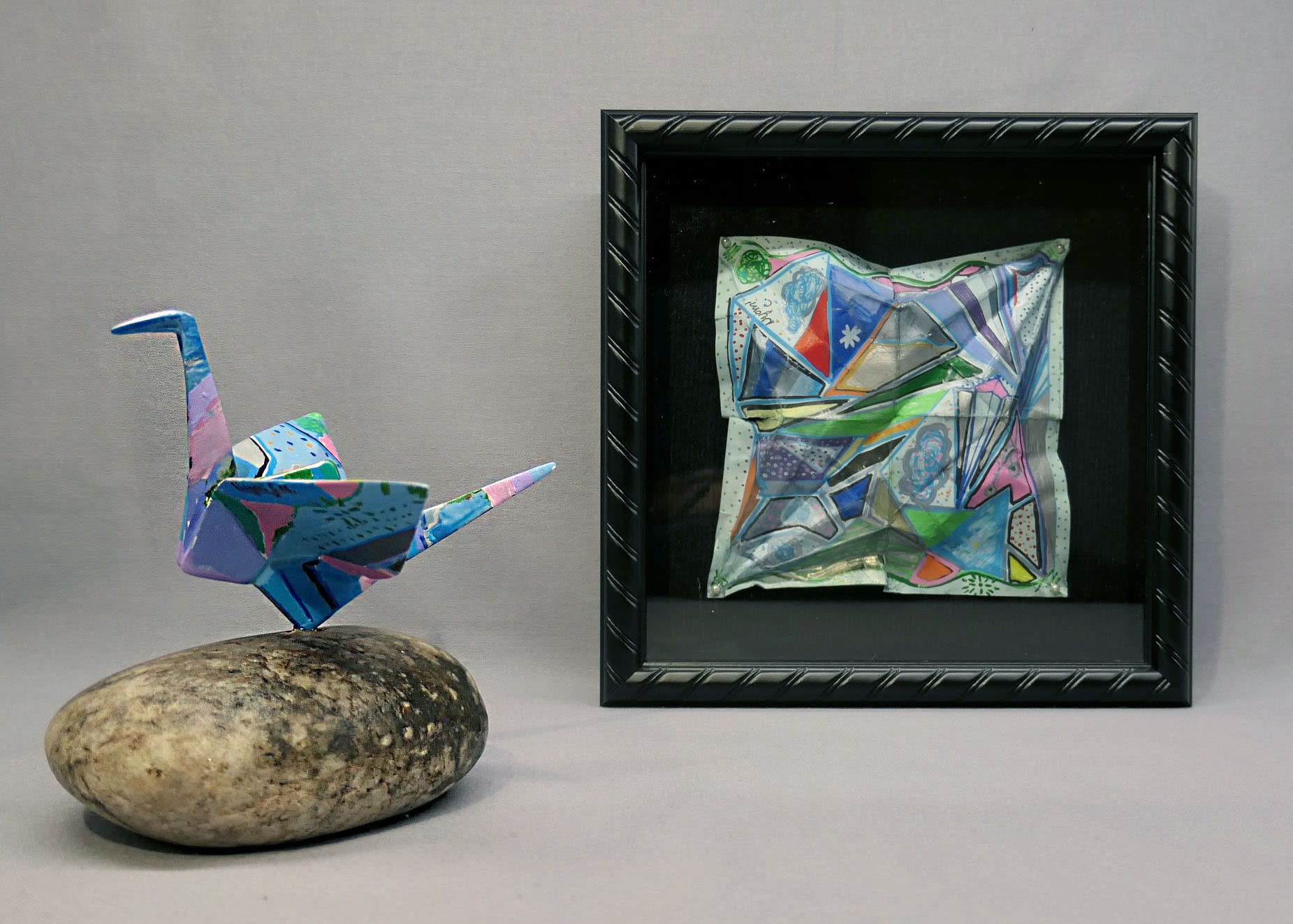
The Beautiful Mess by Naomi Charlie-Miller, Capital High School.
How will ARTsmart support that kind of learning experience from afar?
SM: We’re morphing our programming to meet the needs of remote students. Last spring, we dabbled in content creation and we will continue to support virtual teaching artists. What are the different ways that artists would interpret that challenge? We’ve created videos of artists speaking about their inspirations, their process, the bigger things that derive their work, and then paired that with specific projects. The instructive element would be the bigger themes and motivations that drive artists. That would be backed up with a written instruction booklet, because we’re trying to reach students across the digital divide.
What about access to art supplies?
SM: That’s something we also worked on this spring, was how to get art supplies into the hands of kids. We knew kids were losing that with remote schooling. I want that to always continue.
CG: Many families have no art supplies at home. We worked very closely with ARTsmart and other members of the Santa Fe Community Educators Network to distribute learning kits in the Spring and Summer, including kits that emphasized the visual arts. Our partners included the Georgia O’Keeffe Museum the Museum of International Folk Art, SITE Santa Fe, Audubon New Mexico, the Santa Fe Botanical Garden, NEA-Santa Fe, and other organizations. Working together, we assembled and distributed thousands of supply kits. Emails and phone calls went out to families to let them know they could pick up art supplies, along with food, at the district-sponsored, food distribution points. It was a phenomenal community effort and a real indicator of Santa Fe’s commitment to high-quality, experiential learning.
Children and youth—all human beings, really—need more than screen time. We need time and space to imagine and create, and to experience connection with ourselves, the natural world, and each other. Providing art supplies this summer was one way we were able to foster and encourage that connection.
I am definitely concerned about budget cuts. Normally, art supplies are shared, so school budgets can be stretched to meet more children’s needs. This year, we have to create individual art supply kits. This is more expensive and we definitely need community support.

Platter by Ari Aponte, Wood Gormley Elementary School.
We’re headed into a recession, which means art programs will likely face budgetary cuts before STEM programs. What is the intrinsic value of an art program to a school?
SM: I think that from my experience as an art teacher, I always understood that the art room was a community. Kids always felt a different feeling when they were in the art room that they didn’t necessarily feel in other classrooms at school. It’s an indicator that’s not really measured or talked about—the art in a school really creates that community. How do we build social and emotional learning into this year’s Teaching Artist Program? How do we take that community and emphasize what art can do?
CG: That’s a big question! First of all, Sarah is right: the arts are fundamental for students’ social and emotional well-being. We all witnessed this firsthand during the early months of the pandemic: cellphone videos of Italians singing opera from their balconies. Or families stuck at home, recreating famous artworks in the Getty Challenge. Art, music, movement…basically, self-expression and creativity, is what everyone turned to when we were stuck at home feeling stressed, frustrated or afraid. It shouldn’t surprise anyone that the world turned to art to soothe us. Art helps with feelings of overwhelm.
I also think the arts are critical to students’ sense of belonging. We are social animals, and we need social connection to thrive. Art fosters connection in very natural ways. In my opinion, the potential for utilizing art and creativity as a means of building connection and belonging is important for public schools right now.
Are there still ways to foster that sense of community, despite our current forced isolation?
SM: I’ve been talking with Cristina about thematic programming in Title I schools. We’d like to think about the idea of community, and have students work under that theme, to amplify the connection to something that’s been lost right now, which is community.
CG: I love thinking about the possibilities of what Sarah’s talking about for some community-based, public practice, large-scale art projects. We’ve talked about working with the theme of community, and challenging students to dream up ways that their work can be combined into a larger installation. I can imagine this working outdoors, in a large, open, public space. Students could contribute individual components that combined, form a community response to topics of relevance to them, and their families.
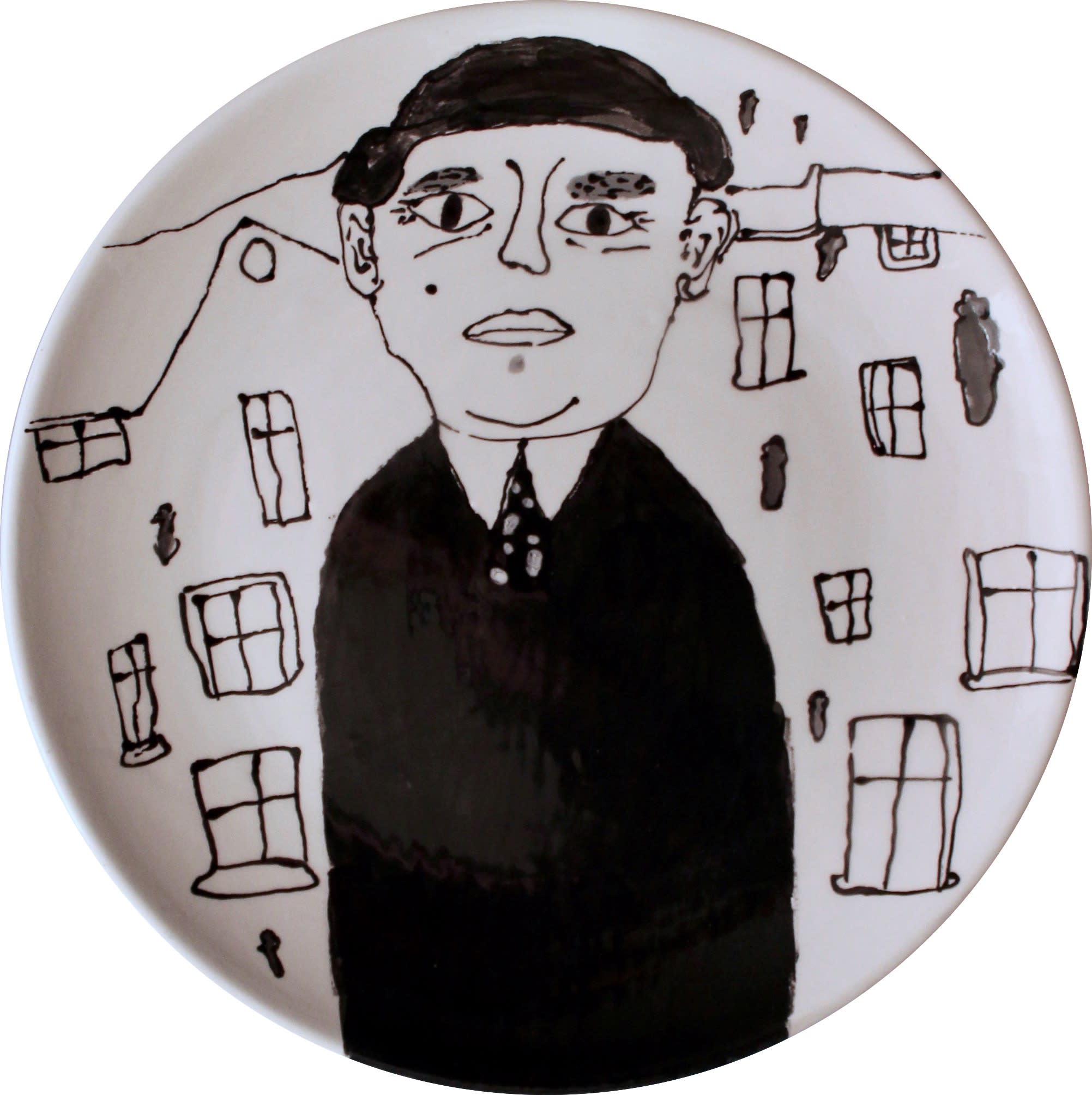
Platter by Jordyn James, Cesar Chavez Elementary School.
How can art programming help students process other topics that are getting long overdue attention right now, such as systemic racism?
CG: Working with community partners at the Santa Fe Opera, Albuquerque Public Schools and Rio Rancho public schools, I helped organize a conference this summer called PLUNGE and we offered workshops that precisely addressed challenging topics, for example, what does it mean to bring in anti-racist literature, or to teach from an anti-racist point of view, to a child? What about a child as young as Pre-K, four years old? There are lots of curricula and books available for introducing really complex and loaded content, even with very young children. Educators and administrators sometimes need support in finding these resources. And sometimes they need a gentle nudge to prioritize diversifying their approach.
Art is a fabulous way to have difficult conversations. It is not always confrontational, it can be a wonderful way to open dialogue, for students to express themselves and really surface complex ideas and topics. Sarah supports nudging our Teaching Artist Program in that direction. Working with artists who are engaging with topics of diversity, equity and inclusion, and will bring those ideas into classrooms in their own creative ways. I feel very supported by ARTsmart in finding ways to bring that into the classrooms.
As part of this Partners in Art feature, you’re offering some lovely artwork by the students and other goodies that folks can purchase. Tell us about what’s available, and where the money will go.
SM: Well, first there’s a selection of plates from the Children’s Painted Ceramics Program, which is one of ARTsmart’s longest-standing fundraisers. Every fifth grader creates a design in their art class. We select 100 of those designs and transfer them onto bisqueware. We sell those and the funds go back to the Visiting Artist Program, and the students also get a salad plate with their design as well. This has been going on for over 20 years.
Then there are cranes that Capital High School students created with Santa Fe artist Kevin Box. Proceeds for those sales will be split between the student and Capital High’s art program.
We’ve also amassed a really remarkable collection of inspiring oddities over the years, so we’re selling these “Imagination Kits” of random, interesting materials, like maps and papers and beads and rocks and shells. Offering those through our online store is a major hub of our fundraising for the moment.
Explore student artworks from ARTsmart.
